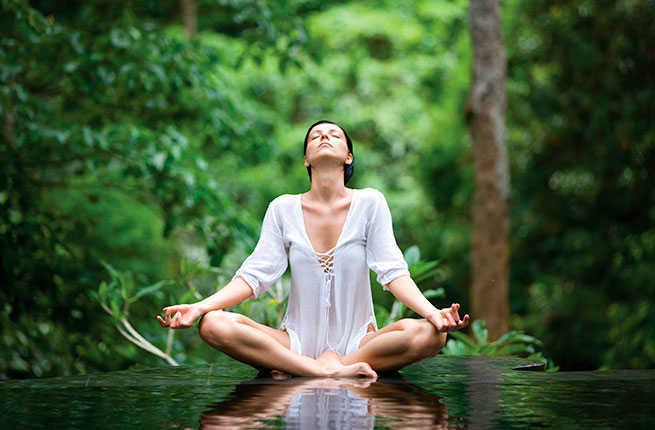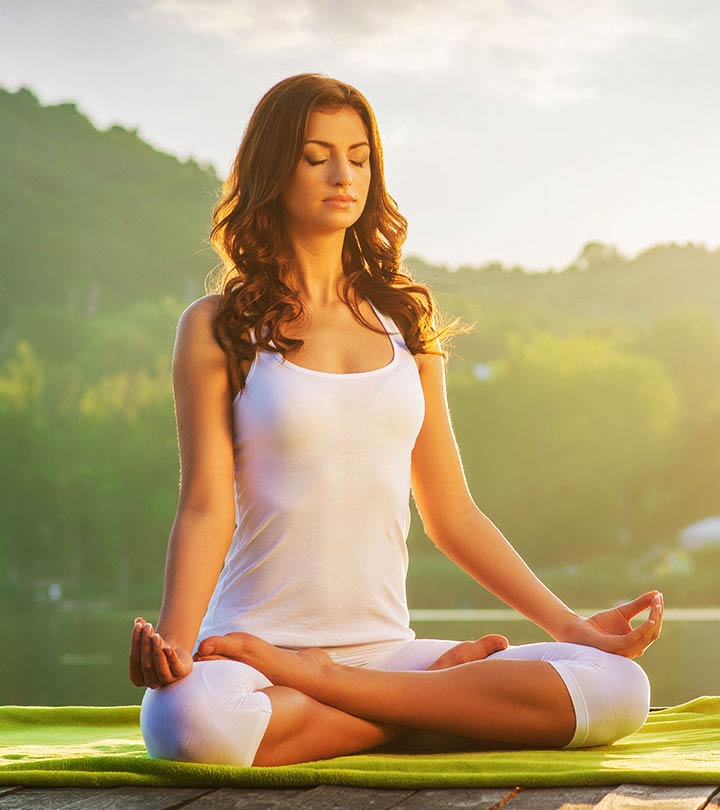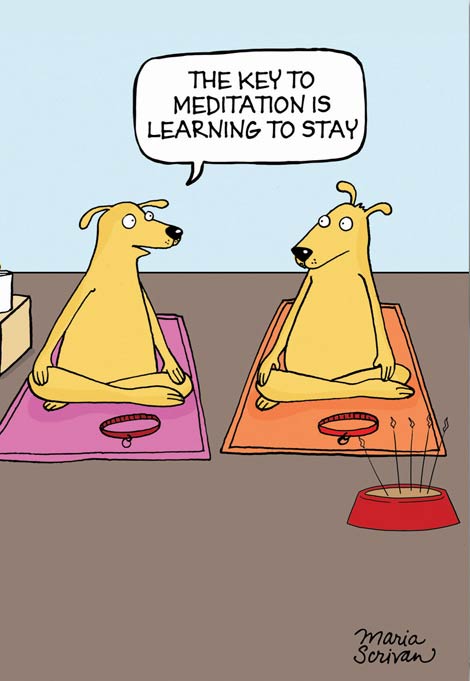

Teacher Notes

The first and most important thing to do before any class is to meditate. If you can, try and have someone else help you set up the space. As a suggestion, a circular setting with chairs and, if possible, cushions for those that want to sit on the floor works well.
Place a small table in the middle with a cloth, a candle and perhaps flowers. You will need to note the fire safety policy of your venue - they may have smoke detectors and not allow candles.
Play some nice meditative music. Allow yourself 30 minutes or so after everything is set up to go and meditate, and remember that people might start arriving up to 30 mins early for the class. It is a good idea to have others do the meet and greet while you are getting yourself ready. Wayne Dyer has a prayer that he repeats before his presentations ŌĆ£how may I serve?ŌĆØ You may try something similar.
The idea is to listen, to become an instrument, to be intuitively guided, to allow yourself to be used as exactly the conduit that your students need at this time in their lives.
The affairs of the world will go on forever. Do not delay the practice of meditation. ~ Milarepa
Be aware that every class is different, the seekers that come all have completely different needs and your role is to respond to that.
Visualise the whole class, the exercises that you will do, what you will say and see yourself being inspirational and your students being inspired.
In any kind of public speaking, you need the practicalities of a joke or a story or an exercise to reinvigorate or help pace the session so work those out as well, have a couple of plan bŌĆÖs should everything not go exactly as planned.
Meditation is actually really fun to teach because it is so practical. You will need some explanations and theory in the beginning but as the classes progress, the theory should succumb to more and more practical meditation exercises.
The exercises are the best teacher, because
after all you are trying to teach your students to be their own
guide. In this way you should try and develop real love and reverence
for your students. Be in genuine awe of their stories, enamoured
by their revelations, really listen and open yourself to their experience. They have come into
your life at this time for you as well as themselves.
listen and open yourself to their experience. They have come into
your life at this time for you as well as themselves.
Let's begin
Then after you have meditated, make sure you are on time. You can be a minute or two early, but do not be late - always, always, always be on time. First impressions are extremely important.
So be on time, smile, make eye contact where possible and really concentrate on radiating love to everyone in the room. Give reverence and love.
The best way to do this is to introduce yourself very briefly and then ask each person to say their name as you go around the group. You can only do this practically with small groups of no more than 30 people but if you have more than that just ask each person to shake hands and introduce themselves to the person either side of them. As this happens try and send love to every person in the room. You can ask for a show of hands to see who has meditated before, but this first class is basically to dispel some of the mystery about meditation, we start by explaining how it works.
You can refer directly to class 1 here if you want but for these first few classes the important information is copied across to here, whilst in later classes your teacher login will give you access to teacher information directly in the class itself. These first few classes also have a lot of extra ideas that you don't necessarily have to use all at once, but may be handy in later sessions.
In Summary This class is about the mechanics of meditation and dispelling the myths.The Meditation Society of Australia exists to help people learn to meditate without any other religious or other agendas.
We are a non-profit organisation funded and operated by volunteers.

Every endeavour goes through similar processes
to eventually arrive at meditation experiences.
If, for example, we want to become a pianist, we first have to train
the body and the mind to have the correct finger technique etc.
For a footballer, the right kicking style; for a rock-climber, the
right moves; so we concentrate past the superficial to the analytical
mind and learn and practice as efficiently as possible.
As we progress in each endeavour there are
moments where our consciousness is transported past the analytical
to the intuitive or higher mind or what we may call the heart. Examples
of these intuitive or ŌĆśmeditativeŌĆÖ moments are typically where a
team works as one, a runner experiences the ŌĆśrunnerŌĆÖs highŌĆÖ, a bushwalker
ceases to be an observer and merges into the feeling of the forest
and becomes a participant, a sports person hits a ŌĆśzoneŌĆÖ. As we
know already these moments are usually;

What lies behind us and what lies before
us are tiny matters compared to what lies within us.
- Oliver
Wendell Holmes
Fulfilling - they are the reason we spend hours at our endeavours so we can get a few moments of ŌĆśmeditationŌĆÖ.
The seven keys to meditation
1. Find a special place Set aside a special place
that is used only for meditation. If you have a spare room, great,
but itŌĆÖs fine to set aside a corner of your bedroom. This will be
your sacred space for self-discovery, so youŌĆÖll want to make it
as inspiring as possible.
You might like to:
┬Ę Cover
a low table with a clean, light cloth
┬Ę Place a candle on a
table, and a vase with fresh flowers if possible.
┬Ę You may also
want to light some incense. Together, these items will help create
a meditative atmosphere.
2. Prepare Physically Your
spiritual journey takes place in and through your physical body.
HereŌĆÖs how you can help prepare it for meditation:

┬Ę Take a shower before meditating. If it isn't possible to take
a shower, wash your face and hands.
┬Ę Wear clean, light, loose
fitting clothes.
┬Ę Take your shoes off before meditating. Your
feet deserve a break too!
3. Sit Relaxed, Sit Straight ThereŌĆÖs no need to sit in a special yogic posture to meditate. If you can sit comfortably on a cushion on the floor, this is best. Otherwise a meditation stool or chair is fine. The important thing is to be still and relaxed, to have your back erect, and to have the flower and candle close to eye level. People often ask if itŌĆÖs okay to meditate while lying down. We donŌĆÖt recommend it; the most likely outcome is youŌĆÖll fall asleep. Always remember to begin your meditation with six or seven ŌĆśpower-breathsŌĆÖ ŌĆō long, slow deep breaths that release the myriad of thoughts and focus your attention within.
4. Slow and Steady Wins the Race In the beginning, five minutes of meditation a day is enough. Meditation is like an inner muscle that you are slowly but surely making stronger. If you overwork a muscle, it becomes sore; if you meditate for more than five minutes and feel tension in your head or get a headache, you know youŌĆÖve gone beyond your capacity. Try not to be concerned with expectations of what your meditation is going to do for you or what your meditation experience ŌĆśshouldŌĆÖ be. Just steadily, soulfully and sincerely practice and make yourself alert to the messages that will begin to arise from within
If by giving up small pleasures, great happiness is to be found, the wise should give up small pleasures, seeing the prospect of great happiness - THE BUDDHA.
5. Choose the right time Make an appointment with yourself and practice at the same time each day. Just as you feed your physical body several times a day at certain times, meditation nourishes your inner life so set at least one special time each day for your meditation exercises. The best time to meditate is early in the morning, before you enter into your daily activities. This way, the peace you get from your meditation will permeate the rest of your day.
6. The Power of Music Music is often referred to as the language of the soul. Peaceful music of the heart will create a meditative atmosphere and tremendously enhance the quality of your meditation. Play it softly during your exercises; merely listening to and absorbing the music will help you to feel the deep inner stillness of meditation
7. YOU! In the end, the most important ingredient in this whole process is you. It is you, who experiences, you, who is discovered, you, who is the student, you, who is the real teacher and you, finally, who is revealed.
 As
you fix your gaze upon it, feel that you are looking at the candle
with your heart and that you are travelling through it with infinite
peace.
As
you fix your gaze upon it, feel that you are looking at the candle
with your heart and that you are travelling through it with infinite
peace. HELP with downloads •
home •
daily meditation
• online classes •
forums • shop •
ecards •
join up •
map •
contact
copyright ® meditation.org.au 2024 - The Meditation Society of
Australia